AMABHUNGANE ANALYSIS
Who is behind South Africa’s xenophobic nationalism?
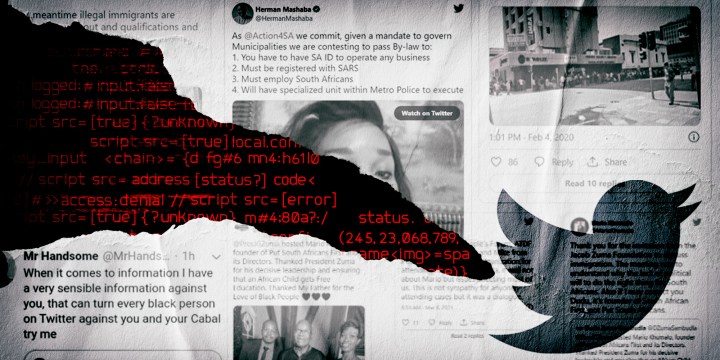
Evidence gathered for amaBhungane suggests that if South Africa descends into xenophobic violence, it will be disproportionately due to the actions of a few political actors.
Two years ago, on 27 April 2020, the #PutSouthAfricansFirst campaign was launched.
It was just one month into South Africa’s Covid-19 hard lockdown, and with this launch, South Africa’s turn towards xenophobic nationalism took a giant step forward.
Unlike grassroots, organic movements, this movement appeared to arrive fully formed from day one. One could hypothesise many potential agendas behind the move towards targeting foreigners for political gain. After all, this political play – tapping into our desire to protect “our own” from “the other” – is as old as society itself.
Who in the South African context might be open to such a cynical strategy?
- Perhaps the ANC Radical Economic Transformation (RET) faction has realised their attempts to position “White Monopoly Capital” (WMC) as the bogeyman responsible for all the country’s ills have not delivered the political goals they had hoped for, and now they are looking to galvanise new political momentum?
- Maybe other elements of the incumbent ANC, aware of their own failure, decided to shift the blame on to foreigners to obfuscate their own shortcomings?
- Perhaps ActionSA, a newly birthed party, looked to the successes of Trump’s Maga movement and similar movements around the world and realised the power of a similar nationalist message?
- Maybe so-called WMC actors did something similar to shift attention away from their role in contributing to the unequal society we live in today?
Some of these scenarios seem more plausible than others when one looks at the pre-history of the #PutSouthAfricansFirst movement, its launch, who has used the hashtag, and the social media data produced around its use.
What we do know is that two noteworthy groups were there on day one when #PutSouthAfricansFirst launched: ActionSA’s Herman Mashaba and the alleged ANC RET-offshoot party, the African Transformation Movement (ATM).
Were these two groups unwitting early adopters of a dangerous message or were they in on the game?
Emphatically no, says ActionSA’s national chairperson, Michael Beaumont. He told amaBhungane: “It is simplistic and malicious that Herman Mashaba’s long-standing outspokenness about illegal immigration, which long pre-dates the #PutSouthAfricansFirst movement, can be interpreted as evidence that either he or ActionSA were part of a coordinated effort or campaign.”
He added, “If you seek someone to blame for xenophobic violence, look no further than our own national government that has failed to manage our borders, failed to document people legitimately in our country and failed to protect South Africans and foreigners alike against criminality in our country – the confluence of these failures is responsible for the constant threat of xenophobic outbreaks in our country.”
The ATM also denied being part of a campaign, noting: “Your theory or analysis is nothing but a wild witch-hunt and an attempt to mire the ATM into controversy.”
Other groups that had been circling around the ANC factional battles, such as the All Truck Drivers Forum (ATDF) and the Umkhonto weSizwe Military Veterans Association (MKMVA) also had a strong presence from early on.
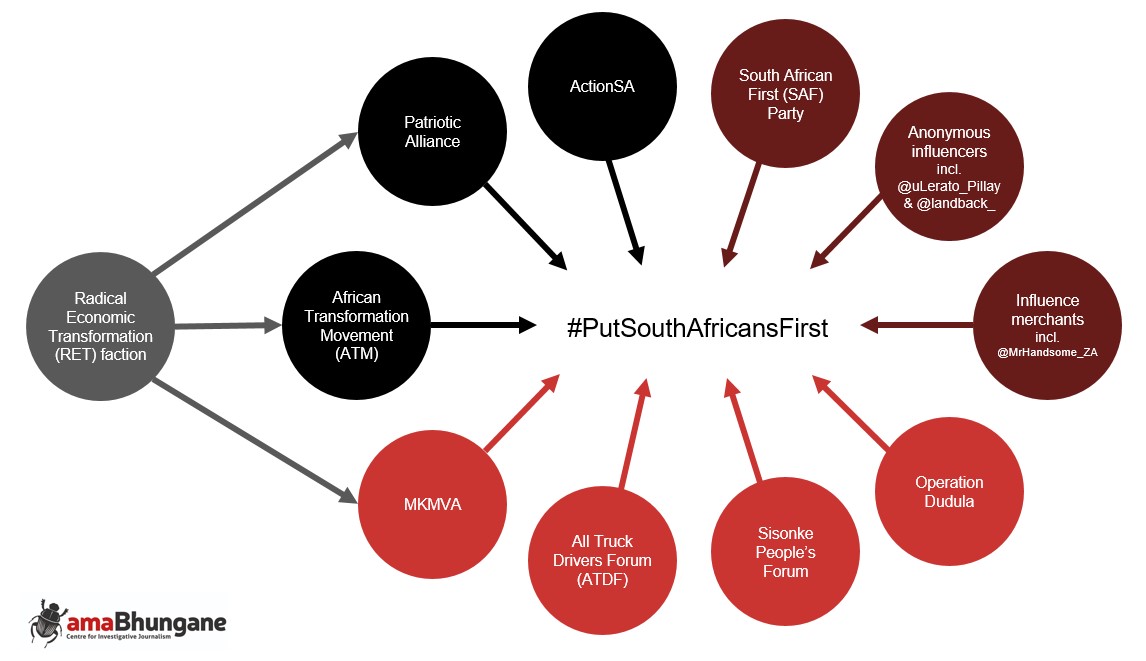
Figure 1: Diagram of the main groups involved.
One can ascribe the rise in anti-foreigner, nationalist narratives to specific dynamics within South Africa, but the truth is that these dynamics occur in many societies. Such movements have been the go-to tool in any populist’s toolbox from time immemorial. (See sidebar, How to create a populist movement, below)
The question is: have these resentments been deliberately manipulated and boosted?
Birth of a movement: the seeds of #PutSouthAfricansFirst
The slogan has quite a pedigree. The first use of the #PutSouthAfricansFirst hashtag occurred on 4 February 2020. The tweeter was Letshela Mofokeng, who describes himself as the leader of the Nationals of South Africa (NSA), a “socially conservative political party in South Africa, standing for free speech, traditional & family values, national sovereignty”, whose tagline is “we put South Africans first”.

Figure 2: There was a single use of the #PutSouthAfricansFirst hashtag before its official launch of 27 April 2020.
Mofokeng told amaBhungane, “We [NSA] are a centre-right conservative party… Our party was registered with the slogan ‘Put SA First’… It started as my own campaign, and back in the day people weren’t really talking about illegal immigrants because they’d be labelled xenophobic.”
After this single use, it was not used again until its seemingly coordinated launch on 27 April 2020.
Even before #PutSouthAfricansFirst appeared as a hashtag, the ATM (whose head of strategy was Gupta-associate and later Zuma spokesperson Mzwanele Manyi) used a variation of this slogan as far back as 2019.

Figure 3: A screenshot of the ATM’s now-defunct website front page from April 2019.
The ATM told amaBhungane, “For us at the ATM the term Put South Africa First is first and foremost an acronym that predates all the dates that are part of your poorly researched analysis. The acronym is made up of the first letters of the ATM values as enshrined in the Constitution of the ATM which dates back to June 2018. Our values are: P-eace, U-buntu, T-ransformation, S-ervanthood, A-ccountability.”
That same year, on 2 September 2019, a march organised by the Sisonke People’s Forum and the All Truck Drivers Forum took a xenophobic turn and 12 people were murdered.
Going even further back, Piet Rampedi (an editor in the increasingly RET-aligned Independent Media stable) reported that Mario Khumalo’s South African First party was behind the #PutSouthAfricansFirst hashtag and that, although the party was registered in November 2016, the idea for the movement was first floated as far back as 2008 after the xenophobic attacks of that year.

14 August 2020: A post from the Twitter account of Mario Khumalo, founder and president of the South African First party. (Image: @MarioKhumalo)
Source: New Frame
Similarly, ActionSA’s Mashaba has a long history of being accused of xenophobia (for example, here, here and here) before his use of the hashtag – though he vehemently denies this label.
But the curious launch of #PutSouthAfricansFirst – on Freedom Day – is strongly suggestive of someone flipping a switch.
Launching #PutSouthAfricansFirst
On 27 April 2020, the #PutSouthAfricansFirst movement was “officially” launched – albeit anonymously. On that day, thousands of tweets were generated by a large variety of users.
Unlike more organic movements, there was no build-up. Instead, the movement arrived fully formed. Such immediately large tweet volumes on debut were not simply due to a single tweet going viral; rather, many different people were saying many different things that were mostly on message.
This surprisingly broad variety of content using the hashtag coupled with the lack of an organic build-up in its popularity before 27 April 2020 suggests someone kicked off a planned campaign on that day.
The chart below captures a subset of the tweets containing the hashtag (there were probably many more generated) and visualises how abruptly the hashtag arrived on the scene:

Figure 4: Daily tweet volumes showing the number of tweets containing #PutSouthAfricansFirst. Note that this is a subset of all data generated and is unlikely to be complete.
Here are some examples of “launch day” tweets:
South Africa is not the Capital of Africa! !!!
Unskilled Foreigners must be deported NOW!!!#PutSouthAfricansFirst pic.twitter.com/yyxmbE7sek— #PutSouthAfricaCitizensFirst✊🇿🇦 (@SAfirstAML) April 27, 2020
There is some elements of truth in this video clip. #PutSouthAfricansFirst pic.twitter.com/RxHH7ZIz9x
— Entrepreneur Zone (@SayEntrepreneur) April 27, 2020
We want to see more of this 👇 and less of foreign owned spazas in Townships. We need to own our economy!#PutSouthAfricansFirst pic.twitter.com/sBXDzVJzn8
— #VoteATM – DecoloniseZonkeBonke (@PhathaATM) April 27, 2020
Call us whatever you want but we will never stop fighting for our birth right #PutSouthAfricansFirst pic.twitter.com/oBFul8aLIX
— Melanin King (@Bullshtspotter) April 27, 2020
I don’t know who started it but i am saying the same #PutSouthAfricansFirst pic.twitter.com/ezcfKYwFPW
— Qwabe (@gumedesenzo2) April 27, 2020
#PutSouthAfricansFirst
Have you ever heard people from Senegal… Mozambique Namibia etc saying South Africans are welcomed to get free food parcels and start churches in their countries 🙄 pic.twitter.com/TaBW5ZsR8w— Certified Lover Boy 😎 (@Real_neristo) April 27, 2020
Example tweets from the #PutSouthAfricansFirst launch day campaign.
Among the tweets on launch day were tweets by ActionSA’s Mashaba and the ATM’s Vuyo Zungula, with Mashaba even using it as a call for voters:
I have been called many names for wanting to #PutSouthAfricansFirst, especially by @MYANC. But I will not be deterred.
I want the people of the world to come to South Africa, but they must do so legally and respect our laws once here. Is that too much to ask? pic.twitter.com/DdHP6qTnIo
— Herman Mashaba (@HermanMashaba) April 27, 2020
If you want to sign-up before we launch our political party, you can join here:https://t.co/We2Z7Vf006#PutSouthAfricansfirst
— Herman Mashaba (@HermanMashaba) April 27, 2020
#PutSouthAfricansFirst pic.twitter.com/9UhBN5m6P4
— Vuyo Zungula MP 🇿🇦 (@ZungulaVuyo) April 27, 2020
Example tweets by Herman Mashaba and the ATM’s Vuyo Zungula on the launch day of the #PutSouthAfricansFirst campaign.
ActionSA’s Beaumont told amaBhungane: “Herman Mashaba and ActionSA’s positions on illegal immigration are grounded in the implementation of our laws and the condemnation of xenophobia. The notion that advocating for the rule of law in our country, while condemning xenophobia, can be blamed for xenophobic violence is illogical and malicious.
“Similarly, agreeing with something that an individual says cannot be understood to be supporting everything that an individual places on social media. Any person who suggests that Herman Mashaba and ActionSA [are] promoting xenophobic violence, despite these facts, has issues with the laws of our country and would prefer to use labels to silence South Africans to keep quiet about an important political issue in our country.”
The ATM told us: “The hashtag #PutSouthAfricaFirst has been widely used by a variety of organisations for various reasons including all those organisations you have listed. Although not factual, at least as far as the ATM is concerned, it is understandable that an impression could have been created that there was some sort of coordination. It could just be a happy coincidence.
“For instance, in the various interactions that the ATM has had with various organisations, some of whom are in your list and some not, we can state categorically that the ATM has never met with the MKMVA, ActionSA, Patriotic Alliance… The doors of the ATM are wide open to meet anyone and any organisation.”
The interaction network below gives us an idea of what the #PutSouthAfricansFirst conversation looked like on Twitter roughly two months after its launch, with clear communities devoted to Mashaba, the ATM, Khumalo’s South African First party, a “grassroots” community of #PutSouthAfricansFirst advocates, and prominent presences by the two key anonymous accounts whose content was most toxic – @uLerato_Pillay and @landback_. And, due to their anonymity, they were able to say things that public figures could not.

Figure 7: Interaction network. Twitter users are connected together when they interact by retweeting and @mentioning each other. User node size is a measure of influence in the network based on how often that user was retweeted or @mentioned. Colours denote distinct sub-communities according to a community detection algorithm.
The real voice of the #PutSouthAfricansFirst campaign though, at least initially, was the anonymous account, @uLerato_Pillay, whose tweets dripped with vitriol towards foreigners.
@uLerato_Pillay’s utterings proved useful to politicians who kept their own content within the bounds of plausible deniability, while still including dog whistles back to the more toxic content and ideas of accounts like @uLerato_Pillay.
Below are the top hashtags being used by these communities at the time.
#WeStandWithSATruckDrivers is particularly interesting, because truck drivers have been at the epicentre of extralegal political action on the ground in South Africa, and it has been suggested that truck drivers (along with other pseudo-political proxy groupings such as taxi associations) are often used as shock troopers in grassroots power contestations.
Truck drivers are also notable for taking part in marches and protests with the RET-aligned MKMVA, again pointing to their involvement as a pseudo-political grouping at a grassroots level.
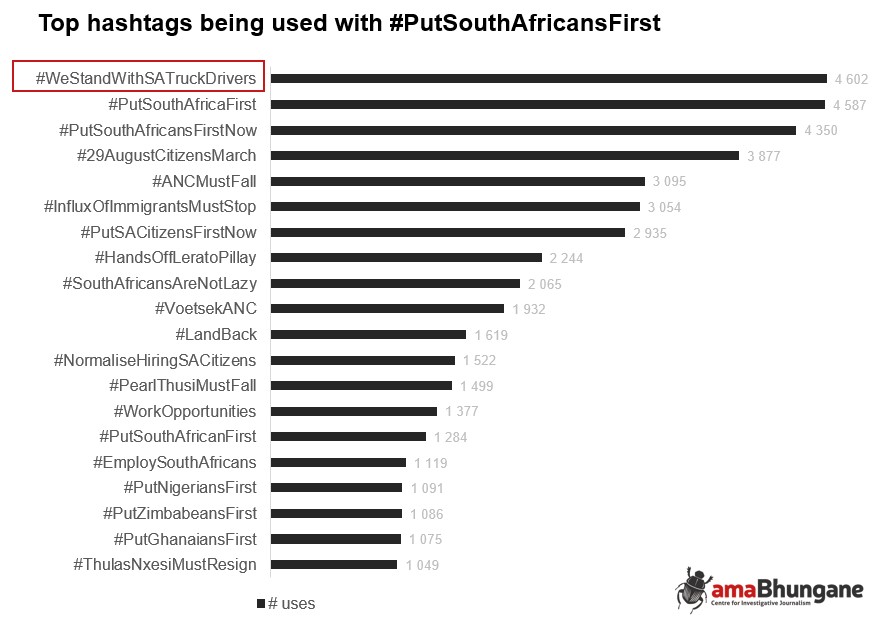
Figure 8: Snapshot of top hashtags in #PutSouthAfricansFirst network (5 June-14 August 2020)
However, despite it being the most popular hashtag on South African Twitter, day after day, #PutSouthAfricansFirst was not able to translate its massive online presence into a real boots-on-the-ground presence.
The movement regularly organised marches against foreigners but these were poorly attended, pointing to the disconnect between its online and physical presences and implying that its online presence was being artificially inflated.
A small group of people marched in Pretoria on 16 October 2020 under the banner of #PutSouthAfricansFirst, saying that foreign nationals worsened the country’s high crime rate and unemployment. But, it was not until the movement hit upon the appeal of Operation Dudula, coupled with its subsequent charismatic leader, Nhlanhla “Lux” Paballo Mohlauli, that it was able to realise its desired real-world impact.
Bootstrapping a movement
When it comes to disinformation campaigns, many South African readers will be most familiar with the Guptabots campaign of 2016/2017. This campaign was used to prop up perceptions of the Gupta family and the Zuma RET faction while attacking their critics, such as journalists.
This campaign made use of hundreds of fake accounts that were controlled by a team of real people almost certainly based in India.
Fake personas that are controlled by real human operators are known as “sock puppet” accounts.
In contrast, the better-known term, “bot”, refers to fully automated accounts with minimal human input that are mostly used to retweet other accounts en masse in order to give those accounts’ content an air of legitimacy.
The current disinformation landscape relies less on bots and sock puppets, however, and more on creating hyper-connected networks that behave like starling murmurations.
Aside from a few fake or anonymous sock puppet accounts that act as influencers, modern disinformation campaigns are primarily driven by networks of real users that form part of an ideologically aligned echo chamber.
One of the most effective ways to build such a community around your narratives and ideas is to use “follow trains”.
Follow trains are simple tools that gained widespread attention in the run-up to the 2016 US elections.
Many fake accounts purporting to be average, middle-American soccer moms or similar stereotypes mingled with real users who collectively pushed out huge volumes of suspiciously on-message, pro-Trump content.
Such users (before they were suspended by Twitter) would post a tweet asking other users to retweet their tweet and to follow everyone else who also retweeted the said tweet. They included collections of specific hashtags in their retweet-and-follow requests to help fellow users find each other, such as #TrumpTrain and #TCOT (Top Conservatives of Twitter).
Such retweet threads are known as follow trains.
These kinds of retweet-and-follow requests were put out very regularly and had the effect of connecting every pro-Trump user with every other pro-Trump user over time.
Normally, networks and communities are connected to each other because they follow the same influencers who act as hubs (creating a pattern known as a “small world” network).
These retweet-and-follow request posts had the effect of connecting every user to every other user directly, moving the natural state of connectivity between users from a small-world network with influencers as hubs into a “fully connected network”.
This is what a follow train does. It creates a hyper-connected community that results in an internally reinforced echo chamber that can withstand huge amounts of external pressure because its members’ confirmation biases are naturally reinforced as everyone around them appears to think and act like them.
It also has the benefit of quickly propagating information to all corners of the network, further reinforcing its internal cohesion.
And, this is how modern disinformation communities co-opt real users into their ideological echo chambers – it doesn’t matter where you enter the community, you will be quickly drawn into the heart of it. See Bootstrapping a movement: a case study below.

Figure 9: Follow trains move ‘regular’ social media networks from a small-world connectivity pattern into a fully connected network pattern.
Tessa Knight and Jean le Roux of DFRLab said the following about @uLerato_Pillay’s follow train strategy:
“The account participated in multiple follow-back campaigns from when it joined Twitter in an attempt to build its number of followers… At time of analysis, @uLerato_pillay had 57,847 followers… It also used the trending Afrophobic hashtags to promote follow-back campaigns in order to grow its follower count still further and encouraged its followers to use the hashtags similarly as a means to grow their own follower numbers.”
The tweet thread below by the researcher @conspirator0 gives you a good overview of some of the main follow train behaviour happening across the world on Twitter, including a prominent South African presence.

Figure 10: @conspirator0’s tweet thread on global follow trains.
Two prominent employers of follow trains in South Africa are clout merchants Daniel Marven and @MrHandsome_ZA. Marven sells his services as a digital marketer and gives clients access to the network he has built up over years via follow trains.
We will get to @MrHandsome_ZA shortly.
How do these follow trains work in practice? See the sidebar, Bootstrapping a movement: a case study below for a real example of how one South African got sucked into an ideological hall of mirrors.
Create, amplify, inject, legitimise
A hyper-connected echo chamber needs content created, artificially amplified, and injected into the discourse, and influencers need to signal its legitimacy to affirm its contribution to the existing echo chamber ideology.
#PutSouthAfricansFirst has consistently been one of the most popular hashtags in South Africa for the past two years.
While they struggled initially to translate their seeming massive online presence into real-world attendance at marches, it seems they have reached the point where the movement is now internally sustainable without artificial intervention.
This is a real fear as it will mean that xenophobic nationalism, while being artificially popularised within our society, has now taken root.
According to DFRLab: “The @uLerato_pillay account, which engaged in deceptive behaviour by claiming other people’s images as its own and artificially bloating its follower count, has been instrumental in amplifying Afrophobic hashtags on South African Twittersphere.”
In this paper, Sue Onslow further summarised DFRLab’s research, saying that:
“[DFRLab] noted that on some days, the Twitter cascade reached 25,000 tweets and retweets, and that a conversation ‘involving 5,000–6,000 people grew to 80,000 over a few months.’ In addition, [DFRLab] found evidence that this circulation was being deliberately orchestrated by a sophisticated network of social media influencers ‘to amplify Twitter.’ The [DFRLab] team concluded that there was clearly ‘money behind this’ and that the repercussions can be felt in the political space.”
Finally, the Centre for Analytics and Behavioural Change (CABC) has highlighted the seeming continued artificial inflation of the Operation Dudula presence on Twitter:
“The CABC also found that while Lux [Nhlanhla “Lux” Paballo Mohlauhi] leads the physical mobilisation of #OperationDudula and receives high traction on posts around the operation, he is not included in the top 10 authors within the conversation [on social media].
“Among the top authors is the @Lolobee93658919 account, which accounts for 3,624 mentions between 1 June 2021 and 6 April 2022. With more than 30,000 tweets since its creation in February this year, the @Lolobee93658919 account has been posting content predominantly linked to #PutSouthafricaFirst and #OperationDudula. An analysis of the account’s last 2,195 tweets shows that 84% of @Lolobee93658919 content are retweets, not original content. This account has also been flagged for its high tweet frequency, which averages 491 a day since the account’s creation and 549 a day for the last 2,195 tweets.”
This was just one of several suspect accounts identified by the CABC.
Mixed messages, or how to gaslight a nation
What happens once you have bootstrapped a hyper-connected community?
Then you need to radicalise it, so that online support translates into real-world support.
How do you do that though if you are a mainstream political party that needs to maintain legitimacy in the face of the controversial narratives you are trying to harness for political gain?
You adopt a multi-level strategy that speaks to different users at different levels. This is what appears to have been employed by ActionSA, the ATM and the Patriotic Alliance.
In the case of #PutSouthAfricansFirst, anonymous influencers (such as @uLerato_Pillay and @landback_) spew vitriol about foreigners and include this hashtag.
“Legitimate” influencers (such as Herman Mashaba, the ATM’s Vuyo Zungula, and the Patriotic Alliance’s Gayton McKenzie) then post more plausibly moderate content, but often with the same hashtag, slogans and/or talking points that act as dog whistles to the more extreme narratives.
They qualify their statements as only referring to “illegal foreigners” or emphasise their interest is simply upholding the law.
Mashaba did stop using the hashtag in August 2020 but ActionSA has been very successful at tailoring its message at different levels.
For example, in the run-up to the 2021 local government elections (LGE2021), ActionSA’s Facebook content mostly focused on the rule of law (probably designed to appeal to DA and conservative voters), while on Twitter, Mashaba’s content included some links to overt xenophobic sentiment.
Let’s take a look at a few examples of how to effectively speak to multiple constituencies at multiple levels:
You could, for example, use the same hashtag as that used by the most vitriolic of anonymous accounts, while saying that you stand for rule of law, unlike that other xenophobic account:

Figure 11: The @uLerato_Pillay account has subsequently been suspended by Twitter.
Mashaba’s original tweet above is accessible here.
ActionSA did later distance itself from #PutSouthAfricansFirst with this statement and Mashaba reaffirmed the culpability of the government, not foreigners:
 Figure 12: Link to the original tweet
Figure 12: Link to the original tweet
…while effectively continuing to demonise all foreigners (not just illegal ones), as in this video that Mashaba shared just two weeks before the LGE2021 (it calls for the deportation of all Somalis, not just illegal ones):

Figure 13: Original tweet link
…even as ActionSA continued to emphasise the rule of law to its other constituents over on Facebook.
Interestingly, the video Mashaba linked to is by Victoria Mamogobo, the national chairperson of Khumalo’s South African First party.
ActionSA’s Beaumont told amaBhungane that its questions about Mashaba’s role were “premised upon simplistic, reductionist logic where you seek to connect two unconnected things/events etc using only timing, innuendo and supposition”.
He added: “It is illogical to assert coordination with other individuals, campaigns, movements or organisations based on isolated social media posts where there may be agreement limited to a post.”
Connecting the dots
A handful of names have been coming up again and again in this story so far: the ATM, the Patriotic Alliance, ActionSA, the All Truck Drivers Forum (ATDF), the Umkhonto weSizwe Military Veterans Association (MKMVA), the South African First party, Sisonke People’s Forum, @uLerato_Pillay and @MrHandsome_ZA. Let’s take a look now at how they are all connected.
As demonstrated below, @uLerato_Pillay was an early booster of parties with anti-foreigner alignment.
 Source: New Frame
Source: New Frame
@uLerato_Pillay also showed support for truckers’ protests against foreign drivers.
 Source: New Frame
Source: New Frame
What’s more interesting is that we now know, thanks to research by Jean le Roux, that @uLerato_Pillay is almost certainly a former SANDF soldier named Sifiso Jeffrey Gwala.
In addition, Tessa Knight and Le Roux have revealed that an old version of Gwala’s Twitter account stated that he was a member of Khumalo’s party, the South African First Party. Khumalo has said he doesn’t know Gwala and there is no record he was ever a party member.
Next, due to a dispute over payment between @MrHandsome_ZA and some micro-influencers working for him, we discover that Gwala is also @MrHandsome_ZA and that he uses WhatsApp to direct teams of micro-influencers for a variety of campaigns, both commercial and political (including an alleged campaign to drive racial conflict to the benefit of his client). Furthermore, we have already seen how @MrHandsome_ZA uses follow trains to build up the networks within which his micro-influencers operate (refer to Bootstrapping a movement: a case study below.
@DigiTicketSA if you want someone to blame for dragging your name you know who it is, #DigiticketPayUs pic.twitter.com/Bt0SudcVMO
— Umntuwabantu (@GabulaMwell_PE) May 22, 2021
Twitter influencers be like since Mr Handsome is refusing to pay us his initial and surname are “J Gwala”
Niggas are revealing secrets now 😅😅🤣 pic.twitter.com/Hu6ArHGP2g
— 𝓀ℯ𝓃𝓏 (@Bokenza1) May 22, 2021
— Silalaze (@PuleMavati5) May 23, 2021
A dispute between Daniel Marven and @MrHandsome_ZA (full thread) included some very interesting comments, implying that both allegedly work for important political actors, and that @MrHandsome_ZA had a direct line to Independent Media:

So Sifiso Gwala appears to be @uLerato_Pillay (who popularised the #PutSouthAfricansFirst hashtag with his virulent content) and @MrHandsome_ZA (who built up the #PutSouthAfricansFirst echo chamber via follow trains).
In addition, it turns out that in November 2020, two months after being exposed as @uLerato_Pillay, Gwala registered a non-profit company called Put SA Citizens First.
Attempts to reach Gwala for comment were unsuccessful.
More connections
Let’ go back to that march in Pretoria on 16 October 2020 under the banner of #PutSouthAfricansFirst.
Letshela Mofokeng and his NSA party were there. So was Victoria Mamogobo, national chairperson of Khumalo’s South African First party.
Also interviewed was Nandisa Gschwari of something called Action for Change. If you listen to this joint interview with ATM’s Zungula, Gschwari suggests a significant degree of coordination with ATM particularly.
Remarkably, slightly earlier in the same month that Gwala registered his Put SA Citizens First, Gshwari became the main director of a non-profit company called PutSAnsFirst Movement. This is especially interesting once you realise Gschwari is the same person who in mid-2018 sued former Prasa boss Lucky Montana over non-payment of loans allegedly granted to him by her company in February 2016.
Gschwari told us: “We are the founders of PutSAnsFirst Movement – a civil rights organisation. Remember SA is being invaded…”
She said the leadership included herself and the chair was Khulile “Mike” Mlomdeeni.
“We are an independent organisation but we support each other. I’m behind Gayton [McKenzie] 101%. We support their ideas, those who advocate for our people… Mashaba, PA, ATM.”
Both Mofokeng and Mlomdeeni were very frank and open when amaBhungane approached them, providing insight into the early days of the movement and the role of more cynical actors like @uLerato_Pillay.
Mofokeng told us, “As far as I remember, I used the hashtag back in 2018. I remember someone on Twitter, uLerato Pillay, who took the slogan and ran with it. There were three NGOs that formed after that and used the slogan… I did not realise Mario’s party [South African First] shared the name. I only met him later in 2019.
Mofokeng said the October 2020 Pretoria march was organised by Action for Change’s Nandisa: “She’s pulling these organisations together. I don’t really know the background to her organisation… She’s just a concerned citizen, no political background…
“I was living in Joburg at the time when I founded my party. Joburg was collapsing and those destroying it were illegal immigrants. I was hijacked by illegal immigrants. I remember my brother was robbed and he said they were foreigners. I spoke to people, I said I’m not a politician but the only way to end this collapse is to start a political party.”
Mlomdeeni told us, “It all started with a hashtag on Twitter which ran very fast from 2016, which started with this gentleman who is no longer on Twitter – Lerato Pillay.
“He started it with Mario, they sat down and said let’s get this thing formalised. That happened in 2020 – the organisation was registered that was separate from Mario’s party. They were going to register the movement as #PutSouthAfricaFirst Movement. There were some issues that arose – infighting.”
Mlomdeeni said they tried to link up with “Lerato Pillay” and the other anonymous account, @landback_.
“[@uLerato_Pillay] is a guy, apparently he has some other names. He founded the hashtag too. That group is very much based on Twitter people. The other person on Twitter was landback_. We could never meet these guys.
“We said, guys, let’s meet so we know one another in person, but we were talking to ghosts. We organised a big march and they were the main speakers there but there was chaos and confusion. We didn’t expect them not to rock up. They just would not pitch. We called them and said, guys what happened? They then accused us of hijacking the movement…
“We had never met them. We were talking on Twitter. Then later, we managed to get their numbers after they gained our confidence and trust. I’m not sure why they were so determined to be anonymous. They just kept disappearing on us and then we lost communication.”
Mlomdeeni said they were against violence: “We are lawful and we are defending ourselves and will not sit back in the face of rampant crime – look at the CBD where people get robbed in broad daylight and the robbers just walk away… Police are not doing their work, so what should we do? We are not xenophobic. Our message is clear even on our banners – ILLEGAL immigrants. We are against those that are illegal, and they’re committing crimes because they cannot be traced.”
The RET faction
Let’s now bring the Radical Economic Faction (RET) of the ANC into the picture by recapping what we already know.
The ATM was there on Day One of the #PutSouthAfricansFirst campaign’s launch.
The party hotly denied allegations that it was the manufactured child of the ANC’s RET faction and the ANC’s internal inquiry also batted away the charge.
But the prominence of former Gupta business partner Mzwanele Manyi in the ATM and as the official spokesperson for the Jacob Zuma Foundation represents an undeniable alliance of interests.
The Patriotic Alliance, set up by Kenny Kunene and Gayton McKenzie in 2013, has long had a strong RET tinge, given the pair’s closeness to Zuma (see here and here) – but has more recently adopted the anti-foreigner message (see here, here and here). The Patriotic Alliance did not respond to requests for comment.
Combine this with the pseudo-military veterans’ outfit, the MKMVA, joining up with the All Truck Drivers Forum to force foreign stores to shut (see video), and the xenophobic nationalist space suddenly starts to look very crowded with RET alumni.
Finally, to wrap it all neatly up, we see some of these groups converge on Jacob Zuma’s Nkandla homestead (which was being “protected” by the MKMVA at the time) as a single delegation “to have tea” with Zuma ahead of his incarceration in early 2021.
@PresJGZuma hosted Mario Khumalo, founder of Put South Africans First and its Directors. Thanked President Zuma for his decisive leadership and ensuring that an African Child gets Free Education. Thanked My Father for the Love of Black People 🖤🖤🖤 pic.twitter.com/BgHF1k1uEE
— Dudu Zuma-Sambudla (@DZumaSambudla) March 5, 2021
Thanks to Sisonke People’s Forum, ATDF – Union of Truck Drivers and Mike from Put South Africans First Organization for attending meeting at Nkandla. It was not about Mario but issues affecting most of us. This is not sympathy for anyone attending cases but it was a dialogue.
— Mario Khumalo (@MarioKhumalo) March 6, 2021
Thank you for the invitation from the Jacob Zuma Foundation to discuss immigration. The meeting was to understand why the lack of political will to do the right thing for South Africans. Also if I may correct you Dudu, it’s founder of South African First, not Put South Africans. https://t.co/0kuPlOEaJ8
— Mario Khumalo (@MarioKhumalo) March 6, 2021
The meeting included the South African First party’s Khumalo, Mike Mlomdeeni and the All Truck Drivers Forum and was convened by the Sisonke People’s Forum, probably in the person of its mysterious chair, Elliot Zwelinjani “Zweli” Ndaba, who appears to straddle both the All Truck Drivers Forum and Sisonke.
Ndaba, who agreed to meet with us and then backed off, has a curious political history.
His online profile begins with a 2013 alliance with the left-wing Workers and Socialist Party (Wasp) before becoming a regional representative for the IFP breakaway National Freedom Party and finally emerging in 2019 as the person who penned the flyer that spurred hostel dwellers and truck drivers to take part in the shutdown that led to xenophobic attacks in Gauteng.
Has the RET faction of the ANC started building up new political momentum based on a cynical call to ethnonationalism after losing their political clout when Zuma’s presidency ended?
AmaBhungane reached out to Mario Khumalo and received no response, but Mlomdeeni filled in some details about the meeting with Zuma from his perspective.
“You know the history of Zuma – we can’t overlook that. We did meet with him, but not because we supported him, but because we realised he is one leader that is influential… and is willing to listen.
“One thing that we know is that he still works with ANC people in power. We wanted him to use his influence. He was very receptive and acknowledged that he was not really aware of the real issues on the ground when he was in power. He was under the impression that South Africans were exaggerating the problem.
“When we met Zuma it was not our initiative. It came up from one of the people who come from KZN. ATDF – those guys arranged it, as well as another organisation called Sisonke. They came up with this idea and we were keen to join. They told us that they could see that we were doing good work.
“But we don’t work with Zuma. I was critical of him during the July unrest. He’s part of the problem, because these issues happened during his era.”
#PutSouthAfricansFirst online, Operation Dudula on the ground
All of this brings us to Operation Dudula (the Zulu word for “repel” or “beat back”).
We’ve already seen that early attempts at #PutSouthAfricansFirst marches failed. The “movement” was able to generate huge volumes online but it was not able to translate this into feet on the ground.

Operation Dudula and #PutSouthAfricansFirst banners side by side at an Operation Dudula march.
Source: Daily Maverick
While Operation Dudula mentions first appeared in June 2021, the movement only really took off after later finding its charismatic leader, Nhlanhla “Lux” Paballo Mohlauli.
Lux made a name for himself by defending the Maponya Mall during the July 2021 unrest. Subsequently, Lux was at some point drawn into Operation Dudula and has since taken it into the mainstream, which occurred in early 2022.
Throughout the ascension of Operation Dudula, the #PutSouthAfricansFirst hashtag has remained omnipresent. As the CABC points out, Lux is really just the on-the-ground face of the broader movement.
Lux did not respond to requests for comment.
There are still accounts pushing huge volumes online in this multi-pronged strategy to harness xenophobic nationalism for political gain.
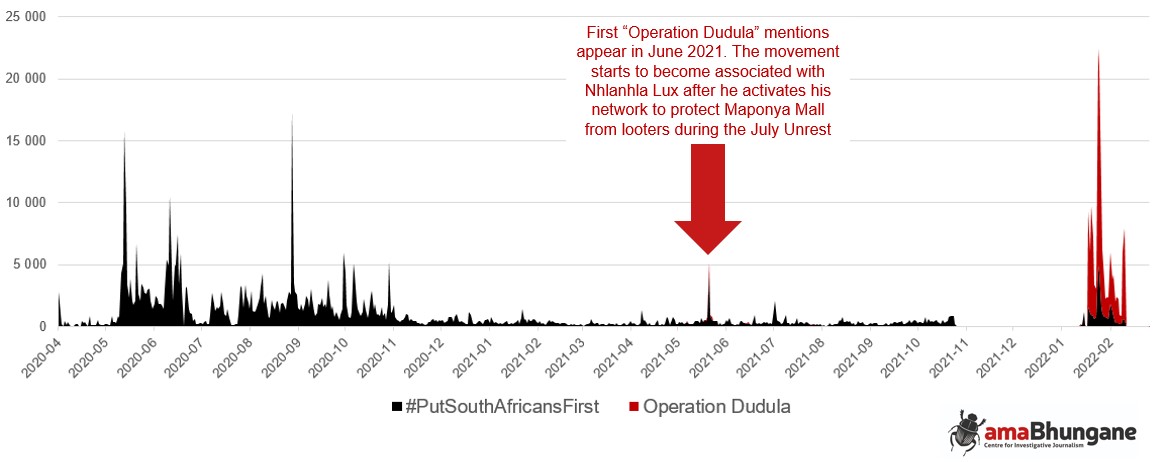
Figure 17: Partial time series of tweet volumes for #PutSouthAfricansFirst and ‘Operation Dudula’ mentions.
Conclusion
So, what have we learnt?
South Africa’s current turn towards xenophobic nationalism may be grounded in real grievances, but its emergence appears to have been artificially fuelled, starting with the launch of the #PutSouthAfricansFirst campaign on 27 April 2020.
Connecting the dots, these seem to be the groups involved:
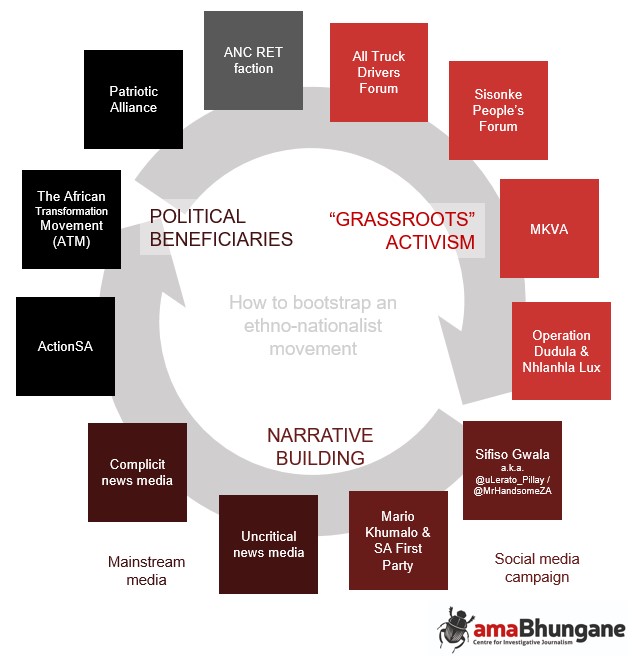
Figure 18: The possible xenophobic nationalist political platform in South Africa.
The sketch we have outlined raises unanswered questions:
- Who is funding Sifiso Gwala?
- Who is funding Nhlanhla Lux?
- Is the boosting of Herman Mashaba’s ActionSA simply coincidental?
- What is the mechanism through which localised, regional politics bubble up through hostels, truck drivers, and people’s movements into national politics?
The main political beneficiaries so far have been the offshoot parties: the ATM, the Patriotic Alliance and ActionSA.
The All Truck Drivers Forum and the MKMVA (and now, increasingly, Dudula) have acted as troops on the ground for the movement.
And, as the RET faction continues to ride the growing wave of ethnonationalism, this gives them an alternative avenue for political momentum in the ANC factional battles.
There appears to be a common thread between the July 2021 riots – kicked off by truckers and veterans – and efforts to plant the seeds of xenophobic hatred and incipient violence.
As we saw with the Guptas and the Zuma State Capture era, demonising “White Monopoly Capital” only got the RET faction so far. Clearly, they need a more close-to-home “enemy” to galvanise the masses in their attempt at populist revolution.
If the RET faction of the ANC, ActionSA and others have any say in the matter, immigration and foreigners will be the issues that our entire politics pivot on in the very near future. DM
How to create a populist movement
When the distance between the people’s expectations of government delivery and their perceptions of how the government is performing grows too large, a “populist gap” forms.
South Africa, with some of the highest levels of unemployment and inequality in the world, has a populist gap just waiting to be tapped into by cynical political actors, and this is exactly what is occurring.

Taking a page out of the populist handbook the world over, from the US to Hungary, some local political actors are harnessing the issue of immigration by fanning anti-foreigner sentiment to galvanise their own support bases. When politicians run out of principled, sound ideas, history has shown us time and again that they fall back on a simple three-step process (see the diagram below).
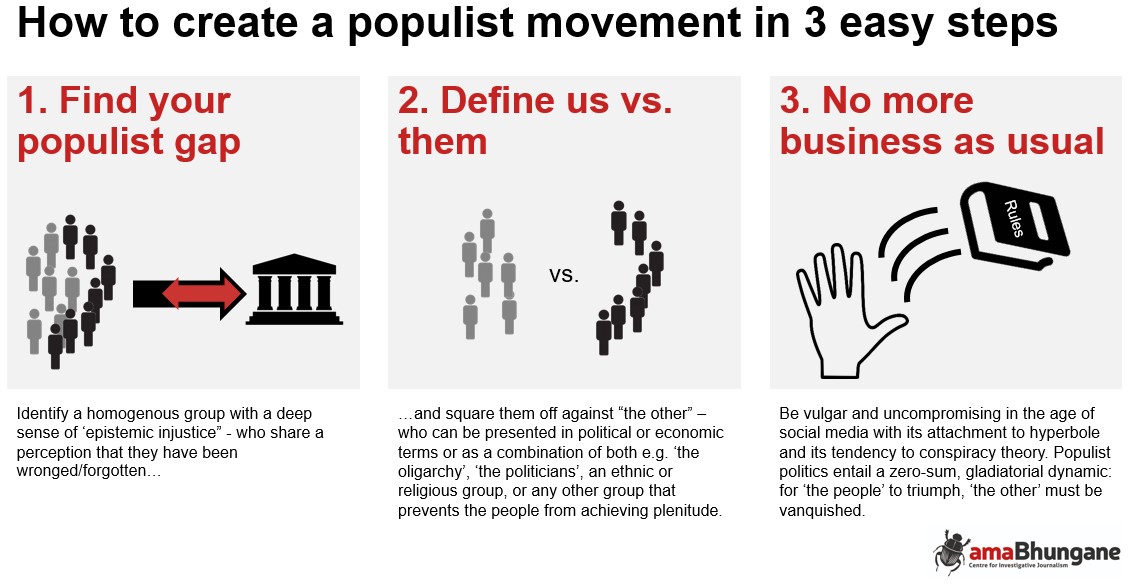
Bootstrapping a movement: a case study
How does one get sucked into a specific ideological echo chamber? The process is actually quite straightforward and gives insight into the kinds of dynamics on social media that have hastened polarisation across the globe.
Let’s follow the case of a specific individual. This user came across our radar after posting trolling content on a journalist’s timeline. To understand them better, we downloaded the suspicious user’s entire Twitter timeline of tweets, which gives us a first-hand look at how polarising ideologies take root in relatively apolitical individuals. For privacy’s sake, we have obscured this user’s name because they are just one of many average users who have been sucked into these communities.
Stage 1: Pre-follow train
Looking at the user’s early tweets, they mostly posted about video games and support for the EFF. We can also see they have an interest in the Venda language, PlayStation and football. From the information available to us, we can surmise that they are likely young, male, live in Limpopo and support the EFF.

Figure 19: Our follow train member demonstrating a concern for the Venda language.
In this early stage of their Twitter journey, they only tweeted very sporadically:

Figure 20: Daily tweet volumes for our follow train user were sporadic and low for the first several months after joining Twitter
Stage 2: Joining the follow train
Six months after our user joins Twitter, they stumble across Daniel Marven’s and @MrHandsome_ZA’s follow trains. Notably, @MrHandsome_ZA deletes his follow train tweets to cover his trail, but we can still see who our user was replying to and the nature of their reply (they reply with just a username, indicative of a follow train):

Figure 21: Examples of our user joining Daniel Marven and @MrHandsome_ZA’s follow trains.
After joining the follow trains, our user’s follower number explodes as they find themselves drawn into a tight-knit community of like-minded individuals – the hyper-connected echo chamber that we have already discussed.

Figure 22: Our follow train user’s follower number explodes as they enter the follow train networks of Daniel Marven and @MrHandsome_ZA
Stage 3: Drink the Kool-Aid and further the narrative
Our user is now firmly part of the network. Their tweet volumes have increased substantially. Is this due to their newfound ideological home, or because they have been co-opted as a paid micro-influencer… or both? We see elsewhere in this article how @MrHandsome_ZA uses WhatsApp to direct his teams of micro-influencers.
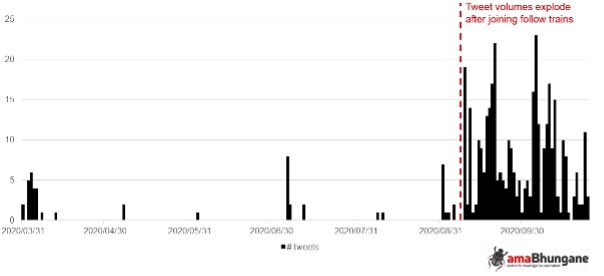
Figure 23: Our follow train user’s tweet volumes explode after joining the follow trains.
And, what do they tweet about? Gone are tweets about PlayStation and football. These have been replaced with anti-foreigner sentiment and attacks on the DA and Ramaphosa ANC:

Figure 24: Top hashtags tweeted by our follow train user between March-September 2020
Thus, our follow train user has now become completely enmeshed within the #PutSouthAfricansFirst ideology and echo chamber. DM

















 Become an Insider
Become an Insider
If these people and organisations would put the same effort into holding corrupt and incompetent officials accountable and at the same time working on solutions to existing problems, SA would be on its way to become a function country. But it is much easier to be deconstructive.
A very important article. Huge thanks to the dedicated, painstaking researchers who produced it. In addition to tearing away the screens on xenophobic power-mongering, it’s a great mini-course on the social media – informative AND instructive.
As I remember the “Irish Troubles” were also caused by a small group of hard core IRA members, and that was before the age of rapid electronic communication and “false news” . All they wanted was the whole of Ireland for the Irish, a sentiment with I as a citizen of Eire agree with though I do not condone how they went about achieving their aim, which has still not been realised.
In a recent YouTube video I mentioned The Paradox of Populism: a movement whose main appeal is to the angry poor, uneducated and down-trodden needs to increase, rather than reduce, this constituency in order to win further votes. Data for unemployment and falling education standards since Zuma came to power illustrates this success. Conversely, Ramaphosa’s attempts to grow the economy by attracting investment could be interpreted as a ruse to reduce unemployment and grow his “middle class” constituency. Another paradox is that the supposedly “grass roots” RET faction was actually created in Britain – by Bell Pottinger.